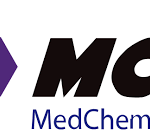Angiotensin II human-5 mg

Description
Angiotensin II (Angiotensin II) is a vasoconstrictor and a major bioactive peptide of the renin/angiotensin system. Angiotensin II human plays a central role in regulating human blood pressure, which is mainly mediated by interactions between Angiotensin II and the G-protein-coupled receptors (GPCRs) Angiotensin II type 1 receptor (AT1R) and Angiotensin II type 2 receptor (AT2R). Angiotensin II human stimulates sympathetic nervous stimulation, increases aldosterone biosynthesis and renal actions. Angiotensin II human induces growth of vascular smooth muscle cells, increases collagen type I and III synthesis in fibroblasts, leading to thickening of the vascular wall and myocardium, and fibrosis. Angiotensin II human also induces apoptosis. Angiotensin II induces capillary formation from endothelial cells via the LOX-1 dependent redox-sensitive pathway[1][2][3][4].–80°C, 2 years; -20°C, 1 year (Powder, sealed storage, away from moisture and light, under nitrogen)–COVID-19-immunoregulation–C50H71N13O12—ACS Nano. 2022 Aug 23;16(8):12553-12568.|Acta Pharm Sin B. 21 September 2021.|Acta Pharmacol Sin. 2021 Jul;42(7):1090-1100.|Acta Pharmacol Sin. 2022 Mar 8.|Am J Physiol Cell Physiol. 2020 May 1;318(5):C913-C930.|Am J Physiol Cell Physiol. 2023 Dec 18.|Am J Physiol Heart Circ Physiol. 2018 Mar 1;314(3):H580-H592.|Am J Physiol Renal Physiol. 2021 Jan 11.|Arch Biol Sci. 2021 Jun.|Biochem Biophys Res Commun. 2021 Apr 13;557:77-84.|Biochem Biophys Res Commun. 2021 Mar 17;552:84-90.|Biochem Biophys Res Commun. 2023 Dec 12, 149375.|Biochem Pharmacol. 2023 Dec 6:219:115967.|Biochem Pharmacol. 2023 May 29, 115631.|Biochim Biophys Acta Mol Basis Dis. 2024 Feb 9;1870(4):167061.|Biochim Biophys Acta Mol Cell Res. 2024 Jan 11:119661.|Bioengineered. 2022 Feb;13(2):2597-2609.|Biomed Pharmacother. 2023 Jul 6;165:115125.|Biomed Pharmacother. 2023 Oct 18:168:115729.|Biomedicines. 2022, 10(12), 3131.|Biomolecules. 2022, 12(11), 1574.|bioRxiv. 2020 Mar.|bioRxiv. 2023 Oct 20.|BMC Cardiovasc Disord. 2021 May 31;21(1):266.|Cardiovasc Diagn Ther. 2020 Apr;10(2):107-123. |Cardiovasc Innov Appl. 2023 Sep 13.|Cell Cycle. 2020 Oct;19(20):2734-2744.|Cell Death Discov. 2022 Apr 5;8(1):167.|Cell Death Discov. 2022 May 4;8(1):246.|Cell Host Microbe. 2022 Oct 12;30(10):1450-1463.e8.|Cell Mol Biol Lett. 2022 Jul 14;27(1):55.|Cell Mol Life Sci. 2023 Jun 20;80(7):184.|Cell Signal. 2022 Aug 18;110443.|Cell Signal. 2023 Nov 14:110974.|Chin Chem Lett. 2022 May 16.|Circ Res. 2020 Mar 13;126(6):e15-e29.|Clin Exp Hypertens. 2023 Dec 31;45(1):2208774.|Clin Exp Hypertens. 2023 Dec 31;45(1):2284658.|Clin Transl Med. 2023 Mar;13(3):e1213.|Elife. 2022 Jun 22;11:e74519.|EMBO Rep. 2022 Dec 29;e56135.|Epigenomics. 2022 Mar;14(5):227-241.|Eur J Clin Invest. 2022 May 4;e13804.|Eur J Pharmacol. 2024 Feb 7:968:176397.|Exp Biol Med. 2020 Jun;245(11):983-993.|Exp Cell Res. 2023 Mar 16;113556.|Front Pharmacol. 17 August 2022.|Front Pharmacol. 24 June 2021.|Gene. 2023 Aug 10;147705.|Heliyon. 2023 May 23.|Hum Exp Toxicol. 2022 Jan-Dec;41:9603271221136208.|Hypertens Res. 2023 May 15.|Immun Inflamm Dis. 2023 Feb 9.|Int Immunopharmacol. 2022 Sep 15;112:109218.|Int Immunopharmacol. 2023 Apr 23;119:110197.|Int Immunopharmacol. 2023 Feb 1;116:109795.|Int Immunopharmacol. 2024 Jan 22:128:111554.|Int J Biochem Cell Biol. 2020 Apr;121:105703.|Int J Mol Sci. 2023 Jun 29, 24(13), 10839.|J Appl Physiol (1985). 2022 May 12.|J Cell Mol Med. 2019 Nov;23(11):7449-7461.|J Cell Mol Med. 2020 Apr;24(8):4748-4761.|J Funct Foods. 2023 Aug, 107, 105670.|J Nutr Biochem. 2024 Jan 10:109578.|J Pharmacol Sci. 2019 Sep;141(1):70-78.|JCI Insight. 2020 Jul 9;5(13):e138505.|Life Sci. 2022 Aug 10;307:120878.|Microorganisms. 2021, 9(2), 452.|Microvasc Res. 2020 Nov;132:104043.|Microvasc Res. 2021 Dec 20;104299.|Microvasc Res. 2022 May 23;104384.|Mol Cell Endocrinol. 2023 Apr 24;111938.|Nat Aging. 2024 Mar;4(3):396-413.|Nat Commun. 2022 Jul 25;13(1):4278.|Nat Commun. 2023 Sep 21;14(1):5891.|Nephrology (Carlton). 2019 Nov;24(11):1103-1114. |Oxid Med Cell Longev. 17 Feb 2022.|Oxid Med Cell Longev. 2019 Nov 23;2019:4025496.|Patent. US20210277021A1.|Patent. US20230068165A1.|Patent. US20230071726A1.|Pharmacol Res. 2020 Dec 19;164:105391.|Physiol Res. 2020 Nov 16;69(5):813-822.|Phytomedicine. 2021, 153675.|Phytomedicine. 2023 Nov 15, 155200.|PLoS One. 2023 Sep 12;18(9):e0291469.|Ren Fail. 2023 Dec;45(1):2230318.|Research Square Print. 2022.|Sci Rep. 2022 Jan 10;12(1):344.|Sci Transl Med. 2021 Jul 21;13(603):eaaz4959.|SSRN. 2023 Feb 14.|SSRN. 2024 Mar 8.|J Healthc Eng. 05 Jan 2022.|Philos Trans R Soc Lond B Biol Sci. 2023 Jun 19;378(1879):20220173.-[1]Nabah YN, et al. Angiotensin II induces neutrophil accumulation in vivo through generation and release of CXC chemokines. Circulation. 2004;110(23):3581-3586.|[2]Hu C, et al. Angiotensin II induces capillary formation from endothelial cells via the LOX-1 dependent redox-sensitive pathway. Hypertension. 2007;50(5):952-957.|[3]de Gasparo M, et al. International union of pharmacology. XXIII. The angiotensin II receptors. Pharmacol Rev. 2000 Sep;52(3):415-72.|[4]Fyhrquist F, et al. Role of angiotensin II in blood pressure regulation and in the pathophysiology of cardiovascular disorders. J Hum Hypertens. 1995 Nov;9 Suppl 5:S19-24.|[5]Crowley SD, et al. Angiotensin II causes hypertension and cardiac hypertrophy through its receptors in the kidney. Proc Natl Acad Sci U S A. 2006 Nov 21;103(47):17985-90.–4474-91-3–1046.18–99.96–O=C(N[C@@H](CCCNC(N)=N)C(N[C@@H](C(C)C)C(N[C@@H](CC1=CC=C(C=C1)O)C(N[C@@H]([C@@H](C)CC)C(N[C@@H](CC2=CNC=N2)C(N3[C@@H](CCC3)C(N[C@@H](CC4=CC=CC=C4)C(O)=O)=O)=O)=O)=O)=O)=O)[C@H](CC(O)=O)N–Cardiovascular Disease; Endocrinology; Cancer–DMSO : 100 mg/mL (ultrasonic)|H2O : 2.5 mg/mL (ultrasonic)–Angiotensin Receptor;Apoptosis–AT1 Receptor;AT2 Receptor–Apoptosis;GPCR/G Protein–Peptides



 Did you check our products for animal nutrition?
Did you check our products for animal nutrition? 